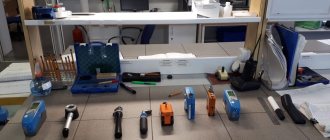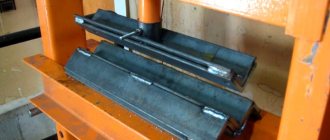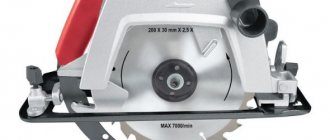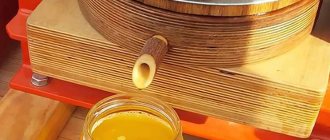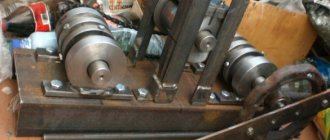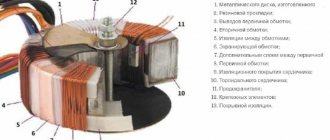Jewelry rollers are especially indispensable for small jewelry workshops. Designed for rolling metals with high ductility, such as copper, aluminum, gold, silver, brass (without preheating) and less ductile low-carbon steel, duralumin, bronze (with preheating to 60-80 degrees) to give them the necessary
geometry: thin sheet, foil, wire of various sections. The wire can later be used to weave into precious gold and silver chains and lace.
A set of interchangeable rollers allows you to form profiles of wedding ring blanks and give finished jewelry and costume jewelry a “diamond” effect.
cuts" (chains, bracelets, etc.)
Jewelry rollers: types, purpose, making your own
Jewelry rollers, by their operating principle and appearance, are very similar to the squeezing devices of old washing machines. Such devices, which were installed on washing machines in the last century, simply pressed the washed clothes between two rubberized shafts, squeezing out the water from it.
In jewelry production, rollers are used for rolling and rolling sheet metal, as well as wire and rods.
Design Features
Jewelry rollers, unlike the rubberized rollers of old washing machines, are made of metal, but work on the same principle. Such devices, the distance between the shafts of which can be adjusted, can operate either manually or electrically. There are also combined models, the design of which implements both options.
Rollers used in jewelry production are designed to compress and bend items made of metal. By setting the distance between the working bodies of such rollers less than the thickness or other cross-sectional size of the workpiece, it is possible to change not only its original thickness, but also its width and length.
Manual roller device
Unlike the squeezing devices of old washing machines, jewelry rollers can have in their design not only 2, but also 3, 4 and even 5 crimping shafts. The use of a large number of shafts allows not only efficient rolling of metal products, but also bending them at different angles. Because of their versatility, three- and four-roll rollers are more popular among jewelry makers, which, if desired, can be made with your own hands.
On the surface of the working elements of factory-made rollers, there may be streams - special holes through which the rod material is driven.
Powerful machines allow you to use several strands for rolling at the same time
It is problematic to make such grooves on the surface of crimping shafts made by yourself. To do this, you need to have fairly complex metal-cutting equipment at your disposal or contact metalworking specialists. This is why many jewelry craftsmen refuse to use homemade rollers, preferring more efficient and functional factory equipment.
Tips for choosing
Based on the purpose, the user can choose the type of equipment. If a specialist needs to perform a large-scale amount of work, then you need to choose electrically driven rollers. There are no disadvantages of this type of technology. Everything works like clockwork.
Jewelry makers must choose a manual type of technique to produce delicate work. The disadvantage of this type of machine is that it is time consuming and labor intensive.
In addition, even in the manual type of jewelry rollers, the user cannot achieve the maximum power that the jeweler/user wanted. Otherwise the functions are identical to electrically driven rollers.
The above problem/disadvantage can be solved by using hydraulically driven equipment. Hydraulically driven jewelry rollers are the most powerful jewelry rollers available. But the advantage of this type of technology is also an inconvenience for the user. More precisely, the size of the special equipment is larger than that of a manual or electric drive. As they say, “size matters.”
If the user has enough space to install the equipment, then he can choose combination jewelry rollers. It is very convenient to have this type of roller. The combined type itself has all the functions of the above listed jewelry devices. But this type, like the other two types, has one big drawback.
More precisely, inconvenience. This is the price of equipment. Since the combination jewelry rollers have all the functions of the three previously mentioned rollers, the price is also higher than other individual ones.
Price
The cost of factory models of jewelry rollers, which can be equipped with either manual or electric drive, depends on their functionality and is in a fairly wide range. The most budget models, which in their functionality resemble homemade devices, cost about 6 thousand rubles. As a rule, such models are miniature desktop devices without additional functions that allow processing products of limited width and a certain configuration. Naturally, on the working surfaces of such devices (which, as a rule, have manual drives) there are no grooves, which are called streams.
Professional electric rollers with a cast iron gearbox will cost about 200 thousand rubles
Rollers for jewelry production, which are in the middle price range, cost 20–30 thousand rubles. These devices are the most popular. Thanks to the larger number of working shafts, such models, in comparison with the most budget-friendly ones made by hand, are distinguished by a longer working surface, due to which the impact on the workpiece is ensured. If for rollers made by yourself and belonging to the budget category, the length of such a surface is about 30 cm, then for more functional models this parameter reaches 1 meter.
The cost of the most expensive and truly functional roller-type devices used in jewelry can reach up to 1 million rubles, and on average it is in the range of 100–300 thousand rubles. An alternative to purchasing them, which also involves quite large expenses, is the services of specialized companies that have such equipment at their disposal.
Manufacturers
There are many different manufacturers on the market. The most popular are the Mario Di Mario rollers and, of course, the YuMO rollers.
Jewelry rollers Mario Di Mario 160 are used for delicate work. YuMO rollers are more universal in this regard. Developed in a more diverse line. Users can use equipment of this brand both in large factories and at home, depending on the type and volume of work.
The price fully corresponds to the developed technology. For home use, you can buy jewelry rollers costing from 20 to 200 thousand rubles. Depending on the tasks and requirements of the future user. The higher the price, the more opportunities there are to create a unique piece of jewelry, which can then be sold at an affordable price.
For home use (at home), it is recommended to use manual jewelry rollers. Saves energy, the user can perform point figures or adjustments to existing curves. the YuMO V-9MP jewelry rollers This is an excellent combination of price and performance. By purchasing this model, the user does not overpay for equipment and at the same time receives a good tool for the job.
This is interesting: Hammers for rotary hammers: varieties, design, disassembly
Types and scope of application
Based on the type of drive used, jewelry roller devices are divided into several categories.
These models do not require connection to an electrical network. Such rollers, although very compact, require significant physical effort to use, since they are manual. The use of hand-held devices is associated with significant labor costs; in addition, the functionality of such devices is at a fairly low level.
Manual rollers RM-03 roll metal up to 60 mm wide
An electric drive ensures that metal products are pulled through a roller system. Compared to manual models, such devices have greater functionality and significantly reduce work time. The electric motor shaft rotates the working parts using a chain transmission, and in some models, the electric drive also ensures the supply of products to the processing zone. Meanwhile, these rollers are practically no different in design from manual models.
The V-9M roller model is a modification of the legendary V-9 manual machine equipped with an electric drive.
Due to the high power of the hydraulic drive, such equipment is successfully used for processing products of complex configurations, which are made of elements with significant cross-sectional parameters. The use of jewelry rollers of this type makes it possible to obtain elements with complex configurations even in one pass through the roller system. To activate such devices and give them the required power, the energy of a compressed liquid - water or technical oil - is used. The disadvantages of jewelry equipment equipped with hydraulic drives are significant dimensions and weight.
With combined drive
Such rollers are characterized by wide versatility. It should be borne in mind that equipment of this type has a higher price, which should be taken into account when choosing it.
Powerful rolling mills are equipped with additional options, such as a wire drawing device or a shaft cooling system
Rollers are divided into different categories according to their purpose. Thus, models for the manufacture of jewelry are used primarily for processing soft metals, the possibility of plastic deformation of which does not require preheating. Metals that can be cold rolled include copper, silver, brass and gold. Meanwhile, such equipment can be used to deform products made of other metals, but to do this, the workpiece will have to be preheated, which is what jewelry craftsmen often do.
If you are making jewelry and other decorations at home and your production volumes are still small, you can use homemade equipment, drawings of which are easy to find on the Internet. However, when your production volumes reach a decent level, and the degree of complexity of the products you manufacture is quite high, it is better to purchase serial equipment that is characterized by high power and wide functionality.
Making jewelry rollers with your own hands
Below is one of the options for making homemade jewelry rollers. A selection of photographs with key components of the device and a detailed video from the author himself about the manufacture, assembly and subsequent use of the rollers.
General view of rollers made with your own hands
And finally, another variation of homemade rollers, but not as complex and monumental as the first option proposed above.
DIY jewelry rollers
Hello everyone, I want to share with you how I made jewelry rollers. I came up with it myself, and did everything a little bit, today I even made a video review of the rollers, where I showed how I use them, and explained everything...
- koksasha
- 28 February 2016, 18:16 9
- asv63
- 28 February 2016, 18:26
- +3
- koksasha
- 28 February 2016, 18:27
- +1
- bAd
- 29 February 2016, 13:34
- 0
- fibber
- 28 February 2016, 18:29
- 0
- captain
- 28 February 2016, 18:38
- +1
- koksasha
- 28 February 2016, 18:42
- 0
- aleksahdr
- 28 February 2016, 18:45
- +1
- koksasha
- 28 February 2016, 18:47
- 0
- koksasha
- 28 February 2016, 18:50
- +2
- 249tov
- 28 February 2016, 18:56
- 0
- koksasha
- 28 February 2016, 19:01
- 0
- 249tov
- 28 February 2016, 19:35
- +1
- koksasha
- 28 February 2016, 19:37
- 0
- Arnai
- 28 February 2016, 19:03
- 0
- dkart
- 28 February 2016, 19:42
- 0
- koksasha
- 28 February 2016, 19:54
- 0
- arty-ale
- 28 February 2016, 20:14
- 0
- koksasha
- 28 February 2016, 20:24
- 0
- arty-ale
- February 28, 2016, 21:30
- 0
- koksasha
- 28 February 2016, 21:57
- 0
- MrEd
- 28 February 2016, 20:17
- 0
- Yura
- 28 February 2016, 20:56
- +3
thank you very much, I will try carburizing myself, I am now building a muffle furnace with a PID controller, I will calcinate the flasks, master hot enamels and at the same time hardening and carburizing. I have a friend who is a thermal specialist and said that he will show you what and how.
but I won’t sharpen the shafts, on the shafts on one side there are gears, and on the other there will be replaceable rollers with grooves... like in the photo
Types and purpose of jewelry rollers
Such machines are used in any modern enterprise for the production of cone, oval, and cylinder shaped products from metal sheets. The process of creating such structures is called rolling. Rollers make it possible to produce any pipes, blanks for further stamping, and various finished products from metal sheets.
Before manufacturing a rolling machine, you should make a drawing of it
Simple rollers are also used in everyday life when you need to do it yourself:
- Gutters;
- Chimneys;
- Pipes;
- Air ducts;
- Other products for roofing and construction.
Modern equipment makes it possible to work with almost any metal sheet. They bend sheet material made of stainless steel, alloy and carbon alloys, aluminum and cast iron sheets without any problems. There are also roller models that operate with polycarbonate workpieces.
All equipment for working with metal sheets can be divided into the following groups:
- Handmade (jewelry);
- Electromechanical;
- Hydraulic.
The manual machine can be installed on a stand (on the floor) or on a workbench (on a table). It does not have an electric drive, so bending on it requires sufficient human strength. Manual jewelry machines are very easy to use. Their design creates the highest reliability of operation of special equipment over a long period of time.
Manual equipment is intended for producing pipes and other products from metal sheets up to 1.5-2 mm thick.
Manual machines are small in size, which makes it possible to transport them and use them directly at the site where repairs are being carried out. It should also be noted that such units do not require electricity. The cost of a manual floor or table machine is always cheaper than an electromechanical one. Machine equipment for bending sheet metal with an electric motor equipped with a gearbox is most efficient in operation. On such machines the work goes faster. The electromechanical machine is mounted permanently in the required workshop of the enterprise and is used for processing metal sheets up to 4 mm thick.
Hydraulics belong to the heavy class. Such machines are required for the creation of pipes and other structures on a large industrial scale at plants:
- Power engineering;
- Shipbuilding;
- Mechanical engineering.
In terms of potential, hydraulics are superior to mechanical and manual designs to a significant extent. It is possible to make pipes yourself from metal sheets up to 8 mm thick. Often such special equipment is equipped with program control.
Operating principle of a metal rolling machine
The main component of the machine equipment is the cast frame. It can be steel or cast iron. A special deformation mechanism is installed on the frame, which consists of 3-4 rollers. Three-rollers are usually used. Two rollers do not move; the third roller rotates during operation.
In addition, the movable shafts can move vertically.
The roller is fixed on top of the frame according to a scheme that allows you to quickly remove it if necessary or quickly adjust it for the production of pipes with different cross-sections. This structural element is adjusted using a single thumbscrew.
The metal rolling machine has a long service life
If the work rollers have grooves , you can bend them:
- Pipes;
- Rods;
- Thick wire.
Manual metal bending equipment traditionally has 3 rollers, but there is a type of pipe bender with 4 rollers. But hydraulic machines are always created with 4 rolls.
Making pipes on any unit is quite simple:
- Clamping the sheet with a special handle on the machine equipment between the shaft in the middle and at the edge.
- Pressing the workpiece with the third roller.
- Rotate the roll manually or start the engine.
Passing through the rollers at a certain speed, the metal workpiece bends at the required angles. To build pipes or gutters at home, you need to use a manual unit. By and large, there is no need to even purchase it (although their price is low), since you can assemble a homemade machine and use it to strengthen the profile pipe.
Terms of use
To use rollers at home, you must initially place the equipment on a flat and level place so that everything is perfectly accurate during operation. After installing the equipment, you need to adjust the shafts to the required width to ensure the desired thickness of the object. After adjusting the width of the shafts, the user must heat the metal or tube for a perfect bend. After heating, the object can be rolled through the rollers and get the desired result.
With the help of this knowledge, it will be easier for the user/master to navigate when choosing a model for further work. Foresight in work is half the success.
Jewelry rollers are presented in the following video.
Rules for strengthening profile pipes
It is almost impossible to do without a device such as pipe rolling equipment in cases where you need to carry out repairs yourself, which will require the use of curved pipes.
To do this, you need to purchase a unit of this type or use homemade profile benders, the design of which is quite simple.
It also makes sense to ask the question of how to make a machine for bending metal because store-bought products are expensive, so buying them (especially if they are needed only for home use) is not always rational. In order to make high-quality homemade rolling, you can study the theory, watch a video on this topic, but the main thing is to listen to the advice of those who have already achieved excellent results.
When using the machine, please follow safety instructions
Naturally, to build your own rollers, you need:
- Have relevant knowledge;
- Have certain skills in manufacturing and using various technical devices;
- Prepare drawings and materials.
Do-it-yourself rollers can even be created from improvised building materials, which are almost always available in any garage or workshop at home. Moreover, such equipment, if everything is done taking into account all the recommendations, will work no worse than products from the store.
Types of cold forging machines
We reason logically and point by point. You cannot bend metal with your hands, no matter how hard you try. Do-it-yourself cold forging is done only using special machines. It's all about them. This is the first point. One machine is not enough; there are a whole bunch of them. This is the second point. Some of them can be done with your own hands.
If you decide, you will need drawings for cold forging machines. How many and what kind of machines you need to have to do what you need and like depends on what you need and like. Exactly like that and in that order.
We take the rod. There are only two options to bend it:
- Along the axis so that the rod begins to resemble a twisted cord.
- Across the axis in the form of various curls, waves and bends.
All cold forging machines are divided into four groups according to the same principle:
- Torsion bar machines that produce longitudinal helical twisting of rods and various filaments, which we will discuss below.
- Twisters for forming curls and spirals with a narrow center.
- Bending machines for waves and zigzags.
- Stamping machines for flattening the ends of rods in the form of legs, clamps and other patterns.
Making equipment yourself
Anyone can make such machine equipment on their own.
Before using the metal rolling machine, you should watch the training video
What building materials and how can this be made:
- The first step is to take a frame made of pipes or a bent metal profile, which will play the role of a frame.
- Next, you need to prepare a U-shaped metal profile (it is best to use hardened steel for this) to create a vertical support for the machine.
- The deforming unit of the rolling unit must be installed in the open (top) part of the metal profile. You can secure it using a clamp with a thread.
- Under the bed you need to secure the bottom of the metal profile P.
- Next, you need to take the transmission chain, without which the machine will not function, and mount it on the stars. It is necessary to tension the chain very well and check the ease of its movement.
- Now you need to mount the feed handle and attach the entire mechanism to the frame using rolling bearings.
The machine is ready. It is important to properly think through a special mechanism in its design that will make it possible to regulate the gap between the rollers. Then it will be possible to process metals of various thicknesses. You can make the most complex rollers yourself. The main thing is to prepare drawings of the machine equipment and follow the instructions.
Having studied the drawings of homemade machines, it is not difficult to make equipment that is ideally suited and will help solve the tasks.
Master Class
each of us is a Master
Micro rollers for craftsmen working with wire
In works involving wire, flat wire is often required. Hitting several meters with a hammer on a flathuisen is a tedious task, and in this case micro-rollers can help.
Materials: - a pair of identical bearings with an outer diameter from 2.5 to 4 cm; — fastening pin (threaded rod), at least 20 cm long; - a piece of iron or steel pipe with a diameter equal to the bearing diameter or 0.1-0.2 mm larger; - several identical nuts with threads equal to the threads on the stud; - metal plate with dimensions from 40x40 mm.
Tools: - drill; — drill with a diameter of 3 or 3.5 mm; — a drill with a diameter equal to the diameter of the stud or 0.5..1 mm larger; — a hacksaw for metal or a grinder with a cutting disc for metal; - vice; - hammer; - a wrench for the existing nuts.
General types of device:
Take a suitable steel pipe. The diameter should be 0.1-0.2 mm larger than the diameter of the bearing hole or “quite close” - then you may need to jam it with something, for example, a small piece of thin steel wire. We saw off two sections from it, 50..60 mm long. You can do less, the device will be more compact, but it will be more difficult to drill.
I bought a kitchen rail, from which I cut suitable pieces. Since the rail was 2 mm larger in diameter than the bearing hole, we had to make a wide cut along the entire length and “turn it” to the required diameter. If you have a grinder, the operation is quite easy, but with a hand hacksaw you will have to tinker.
We put bearings on the segments, placing them in the center of the segment. The bearings must be put on very tightly, even to the point of hammering them with a hammer or mallet.
If you have a workbench with a small hole (slightly larger than the diameter of the axle), then it is much more convenient to drive the axle into the bearing, and not vice versa.
Take a hairpin with a diameter of 6..8 mm and cut two pieces 10..11 cm long from it.
We fix the axle with the bearing in a vice and drill two holes with a diameter of 0.5..1 mm larger than the diameter of the stud. Small diameter drills usually come in increments of 0.5 - so there should be no problems.
To drill accurately, I recommend first punching the future hole with a core (a nail for concrete or a regular screw will do), then drill it with a thin drill (3 mm). Holding the drill vertically, you can immediately use the same drill to make a hole in the opposite part of the axis.
When drilling, it is necessary to observe as accurately as possible: a) parallelism of the holes to each other; b) the same distance between the holes in both axes. Why? Because if “a” is broken, then the studs will not stand in the same plane, which will prevent the installation of the second axis. And if “b” is broken, then the studs will not be parallel to each other and installing the second axis will also be difficult.
I got caught doing this and had to sharpen the hole in the right direction using a needle file.
We take a metal plate that will serve as a clamp and drill holes in it. The distance between the holes should be as close as possible to the distance between the holes in the axle.
That's it, the machine parts are ready.
1. A nut is screwed onto each stud up to 1/3 of the distance. This will be the lower axle stopper.
Which of your axes will be the bottom and which will be the top is never important as long as rules “a” and “b” are followed. If they are not followed, again it doesn’t matter, because it simply won’t be possible to assemble the structure




